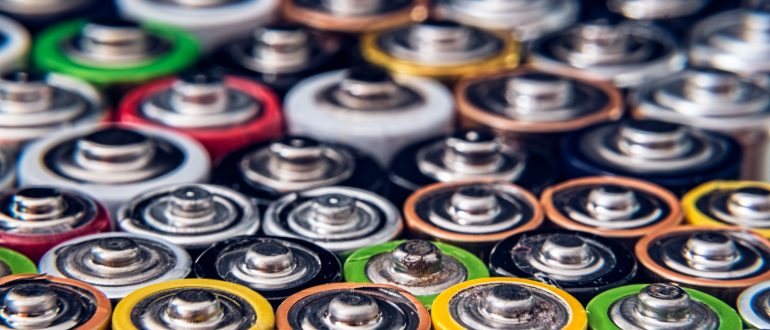
Why does the South American lithium triangle export lithium as a raw material?
We are currently experiencing the breakthrough of electromobility which increases the global lithium demand. The largest lithium deposits of the world are in the South American lithium triangle, the border region between Argentina, Chile and Bolivia (U.S. Geological Survey, 2021, p.99). Here, lithium mining has a negative impact on the environment, because the salt flats are sensitive ecosystems in one of the driest areas in the world and some lithium companies broke environmental legislation by pumping more water from the salt flats than allowed (Argento, Puente & Slipak, 2017, p.425; Reveco, Slipak, 2019. p.111). On the other hand, the large lithium deposits triggered optimism, as they offered an opportunity to process lithium locally into industrial goods such as lithium batteries. For centuries, the profits of Latin American commodity exports have remained with foreign corporations and a small local elite, while the rest of the population mainly experienced the disadvantages of the raw material export model. Lithium seemed to offer the chance to change from a supplier of raw materials to a manufacturer of high-tech products. However, the hope for local industrialization was not fulfilled and the lithium triangle (so far) exports lithium exclusively as a raw material (López, et. al, 2019, p.140). This article explains, why the lithium triangle exports lithium as a primary good without processing it locally into battery components, cathodes or lithium batteries.
The first reason why the lithium triangle does not produce battery components on an industrial scale is a lack of consensus and motives among political leaders and the economic elite. On the one hand, there is no political consensus that local industrialization is a desirable goal for South America (Zicari, 2015, p.106). On the other hand, large interests benefit from the current raw material export model and defend it.
The second reason is the unrealistic view that some politicians had of their country´s position in the lithium market. Media and politics repeatedly compared lithium with “white gold” or “21st century oil” and thus created illusion and false hopes (López, et. al., 2019, p.138). In particular, the Bolivian government did not realistically assess its own position, the power of the transnational companies dominating the lithium market and the difficulty of establishing a new industrial sector in an economy without basic industry (Ströbele-Gregor, 2015, p.39). Moreover, there might be a limited time window to exploit lithium, as for the period after 2030, perhaps lithium will be largely replaced by battery recycling or by new battery technologies without lithium (Abergel, et. al, 2020, p. 25; Ali, Hancock & Ralph, 2018, p.558).
In addition, different management errors and poorly designed strategies have complicated local industrialization. There were disputes between the responsible actors, resistance from local populations, a lack of linkages between different teams of researchers and a lack of cooperation between the scientific system and the private sector (Reveco, Slipak, 2019, p.116; Fornillo, Gamba, 2019, p.143). Different attempts to form partnerships aiming at industrialization were announced, but failed without exception (Ali, Hancock & Ralph, 2018, p.554). The most famous failure was the partnership between the German company ACISA and the Bolivian state-owned firm YLB (Grupo de Estudios en Geopolítica y Bienes Comunes, 2019, p.33).
Furthermore, in Argentinia the legal framework does not favor industrialization, resulting in inter-local competition between the different regions with lithium deposits and in the fact that most of the surface area of the salt flats is already awardedto private companies (Reveco, Slipak, 2019, p.88). Additionally, competition instead of regional cooperation emerged between the three countries, Argentina, Bolivia and Chile. The political instability, various government changes and the very different responses of the three countries to the lithium question made regional cooperation extremely difficult. Due to the instability and the frequent changes of those responsible for lithium projects, the countries of the lithium triangle did not follow a clear strategy and every government change led to a new lithium policy (Argento, Puente & Slipak, 2017, p.406).
While regional integration of the lithium triangle is a distant vision, collaboration between the dominant companies is a fact. Bolivia had to admit that it does not have the technical-technological-human capacities and needs external help, but different attempts of technology transfer failed (Fornillo, 2016, p.81). Lithium technology is controlled and patented by transnational, listed companies, which are interlinked and cooperate with each other. The dominant companies are only interested in the raw material, oppose local industrialization, and, in general, refuse to process lithium in the lithium triangle. They are often vertically integrated with lithium demanders and make great efforts to hold their market shares. In this oligopolistic market there is a concentration within each link of the lithium value chain due to mergers and acquisitions, which complicates the entry of new players into the market (López, et. al, 2019, p.78).
Dominant companies and developed countries devote huge resources to battery development and manufacturing, so the lithium triangle cannot compete due to a lack of capital. The state strategies of the global north and the technological and commercial power of the dominant companies complicate the industrialization in the lithium triangle. A competition over lithium batteries and electromobility emerged between East Asia, Western Europe, and North America. The lithium triangle is not able to compete in this geo-economic battle and is forced to take the position of raw material supplier (Fornillo, Zicari, 2017, p.4).
One of the reasons for this is that the possession of lithium reserves is not the decisive criterion to produce batteries. The cost of energy is higher in the lithium triangle than in China, and since the production of lithium batteries is energy-intensive, the cost plays an important role. Lithium is not scarce, and batteries also require other materials that are not found in the lithium triangle (López, et. al, 2019, p.122). Many inputs such as cobalt, nickel, iron, phosphorus, bauxite, or graphite are missing. The main input of the lithium triangle for battery production would be lithium carbonate, plus Chilean copper, and Argentinean aluminum. This problem would only be solved by cooperating with Brazil, which possesses all the required battery materials that are missing in the lithium triangle, except cobalt (Australian Trade and Investment Commission, 2018, p. 20-27). However, this regional collaboration is not realistic, as not even the lithium triangle or at least the different Argentinian regions are cooperating. In addition, geography does not favor local industrialization. The long distance to Asia increases the cost of transporting batteries on cargo ships. Thus, the big suppliers of battery components follow a strategy of locating production close to the final demand, e.g. battery and electric vehicle factories (Ströbele-Gregor, 2015, p.4).
Concluding, the lithium triangle is facing the typical problems of (neo-) extractivism such as price volatility, dependence on demand from the global north, the dominance of developed countries in the value chain, lithium´s capital-intensive rather than labor-intensive character and South America´s asymmetric trade with Asia, Europe and the US. Other typical characteristics of extractivism that the lithium boom repeats include social conflicts, extraction in sensitive ecosystems, extractive territories isolated from the rest of the economy, the failure of regional cooperation and, finally, transnational corporations pushing the provinces and countries of the lithium triangle to compete with each other (Svampa, 2019, p.12/16/47/70/76). We saw that several challenges such as a lack of political consensus, unrealistic assumptions, management errors, political instability and missing regional cooperation complicated the local industrialization. Furthermore, the multinational corporations that dominate the lithium market opposed every single attempt to produce lithium batteries in South America. As a result, the lithium triangle exports lithium exclusively as a raw material and there is no local production of cathodes or batteries on an industrial scale. In the future, the new Chilean government of Gabriel Boric might address this unfavorable focus on commodity exports and push for a new Chilean lithium policy.
Bibliography
Abergel, T., et. al (2020) Global EV Outlook 2020. Entering the decade of electric drive?, Energy Technology Policy Division of the Directorate of Sustainability, Technology and Outlooks of the International Energy Agency, Paris.
Ali, S., Hancock, L. & Ralph, N. (2018) Bolivia´s lithium frontier: Can public private partnerships deliver a minerals boom for sustainable development?, Journal of Cleaner Production 178, Tennessee.
Argento, M., Puente, F. & Slipak, A. (2017) “Qué debates esconde la explotación del litio en el noroeste argentino? Perspectivas y proyecciones sobre la dinámica empresa-estadocomunidad”, in Alimonda, H., Martín, F. & Pérez, C. Ecología política latinoamericana. Pensamiento crítico, diferencia latinoamericana y rearticulación epistémica, CLACSO, Argentina.
Australian Trade and Investment Commission (2018) The lithium-ion battery value chain: new economy opportunities for Australia, Australia.
Fornillo, B. (2016) Sudamérica Futuro: China global, transición energética y posdesarrollo, El Colectivo, CLACSO, Argentina.
Fornillo, B., Gamba, M. (2019) “Política, ciencia y energía en el triángulo del litio”, in Fornillo, B. Litio en Sudamérica. Geopolítica, energía y territorios, El Colectivo, CLACSO, Argentina.
Fornillo, B., Zicari, J. (2017) The Power of Lithium in South America, Entreciencias: diálogos en la Sociedad del Conocimiento, vol.5, no.12, Mexico.
Grupo de Estudios en Geopolítica y Bienes Comunes (2019) Triángulo del litio. Un área de disputa estratégica entre potencias globales en nombre de la transición energética, Universidad de Buenos Aires, Argentina.
López, A., et. al (2019) Litio en la Argentina: Oportunidades y desafíos para el desarrollo de la cadena de valor, Banco Interamericano de Desarrollo, Argentina.
Reveco, S., Slipak, A. (2019) “Historias de la extracción, dinámicas jurídico-tributarias y el litio en los modelos de desarrollo de Argentina, Bolivia y Chile”, in Fornillo, B. Litio en Sudamérica. Geopolítica, energía y territorios, El Colectivo, CLACSO, Argentina.
Ströbele-Gregor, J. (2015) Desigualdades estructurales en el aprovechamiento de un recurso estratégico. La economía global del litio y el caso de Bolivia, desiguALdades.net Working Paper Series 79, Berlin.
Svampa, M. (2019) Las fronteras del neoextractivismo en América Latina. Conflictos socioambientales, giro ecoterritorial y nuevas dependencias, CALAS, Mexico.
U.S. Geological Survey (2021) Mineral commodity summaries 2021, U.S. Geological Survey 200, Virginia.
Zicari, J. (2015) “La producción minera de litio en América Latina y el ascenso económico de China y de Asia Oriental”, in Latorre, S., Martínez, A. Extractivismo y conflictividad. Nuevos actores y nuevos contextos en América Latina, Revista Economía, vol.67, nr.105, Ecuador.

Luca Schiewe
Luca Schiewe studied International Relations at the University of Erfurt. Currently, he pursues a MSc in Finance at the Nova Universidade de Lisboa. He visited the Bolivian and Chilean parts of the lithium triangle and conducted interviews with several actors of the South American lithium Industry.
